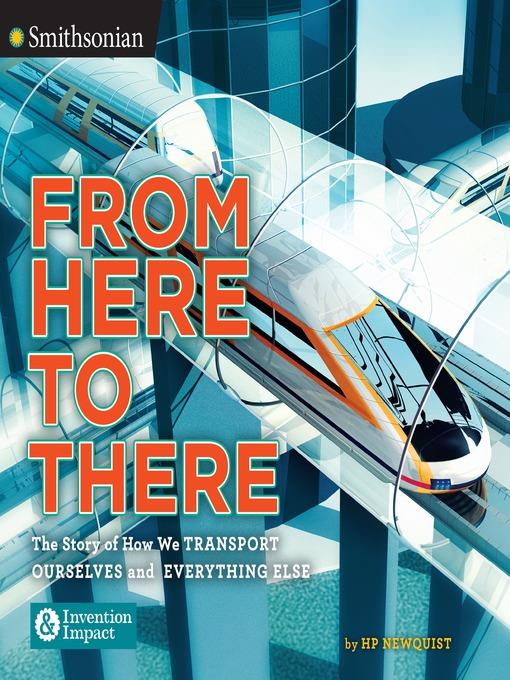
From Here to There--The Story of How We Transport Ourselves and Everything Else
Smithsonian: Invention & Impact Series, Book 2
فرمت کتاب
ebook
تاریخ انتشار
2017
Lexile Score
1190
Reading Level
7
ATOS
8.1
Interest Level
4-8(MG)
نویسنده
HP Newquistشابک
9780698405363
کتاب های مرتبط
- اطلاعات
- نقد و بررسی
- دیدگاه کاربران
نقد و بررسی

September 18, 2017
In this second book in the Invention & Impact series, published in partnership with the Smithsonian, Newquist demonstrates how mobility has been vital to the growth of civilization. Beginning some 40,000 years ago with the earliest footwear, he goes on to explore the evolution of transportation methods, up through air and space travel, providing insight into how technology builds slowly and owes much to trial and error. Chapters detail significant technological milestones and figures, as well as those involved in missteps (in 1896, Sylvester H. Roper died riding the steam-propelled bicycle he invented). An engrossing, in-depth study of how far humanity has come—and how it got there. Ages 10–up. Agent: Alec Shane, Writers House.

October 1, 2017
Gr 4-8-Planes, trains, automobiles, and more are covered in this examination of how people get from one place to another. Newquist begins by looking at shoes, skates, and even sleds, positing that human life depends on locomotion. Subsequent chapters discuss the ingenuity of engineers and their inventions that revolutionized travel. The chapters are necessarily broad, but thorough. Fortunately, the book is well designed. Each chapter employs a color scheme (for picture borders and captions), while each spread contains plenty of beautifully reproduced photographs and archival illustrations, many selected from the Smithsonian's vast holdings. Before the index, Newquist includes a list of resources-perfect for students who want to learn more about individual topics. VERDICT A fine addition to nonfiction collections, especially for those looking to beef up their STEM offerings.-Marie Drucker, Hewlett-Woodmere Public Library, NY
Copyright 2017 School Library Journal, LLC Used with permission.

December 1, 2017
Grades 6-10 In this highly informative offering, Newquist shows how the human desire to locomote has evolved and changed history. He begins with the most basic form of transportationfeetand the creation of shoes 40,000 years ago. Humans eventually realized it's far easier to traverse land with the assistance of four-footed animals and more efficient still when wheels are added to the equation. Subsequent chapters focus on a specific method of transportation, including travel over water, over tracks, on wheels, on the road, and in the air. Newquist not only relates the progression of the mode of transportation but also its impact on history. For instance, the inexpensive, compact bicycle allowed riders to travel miles outside of their neighborhood in a day, gave young people their first taste of privacy away from home, and changed women's clothing from dresses to bloomers and eventually pants. Filled with many tidbits and archival photos, the in-depth book concludes with a look at travel possibilities for the future. Budding historians and engineers will find it right up their alley.(Reprinted with permission of Booklist, copyright 2017, American Library Association.)

























دیدگاه کاربران